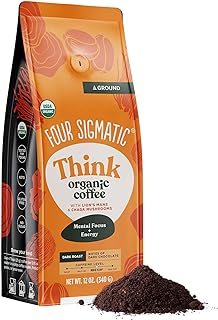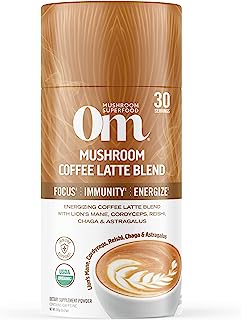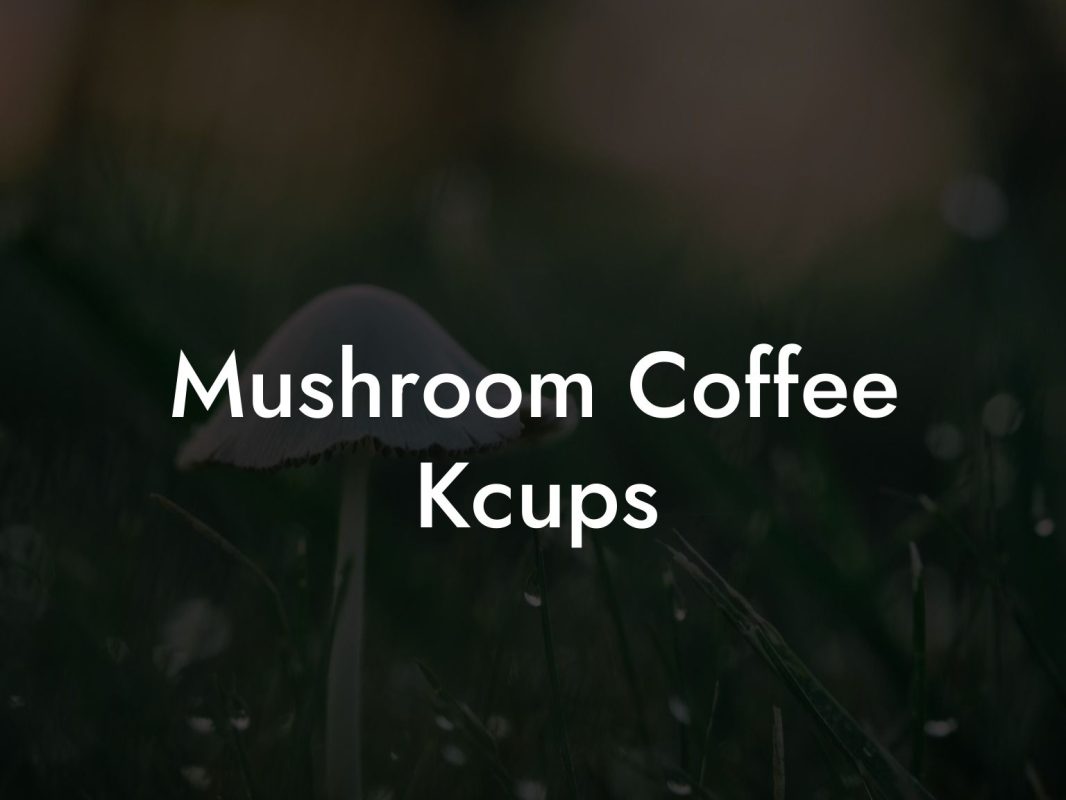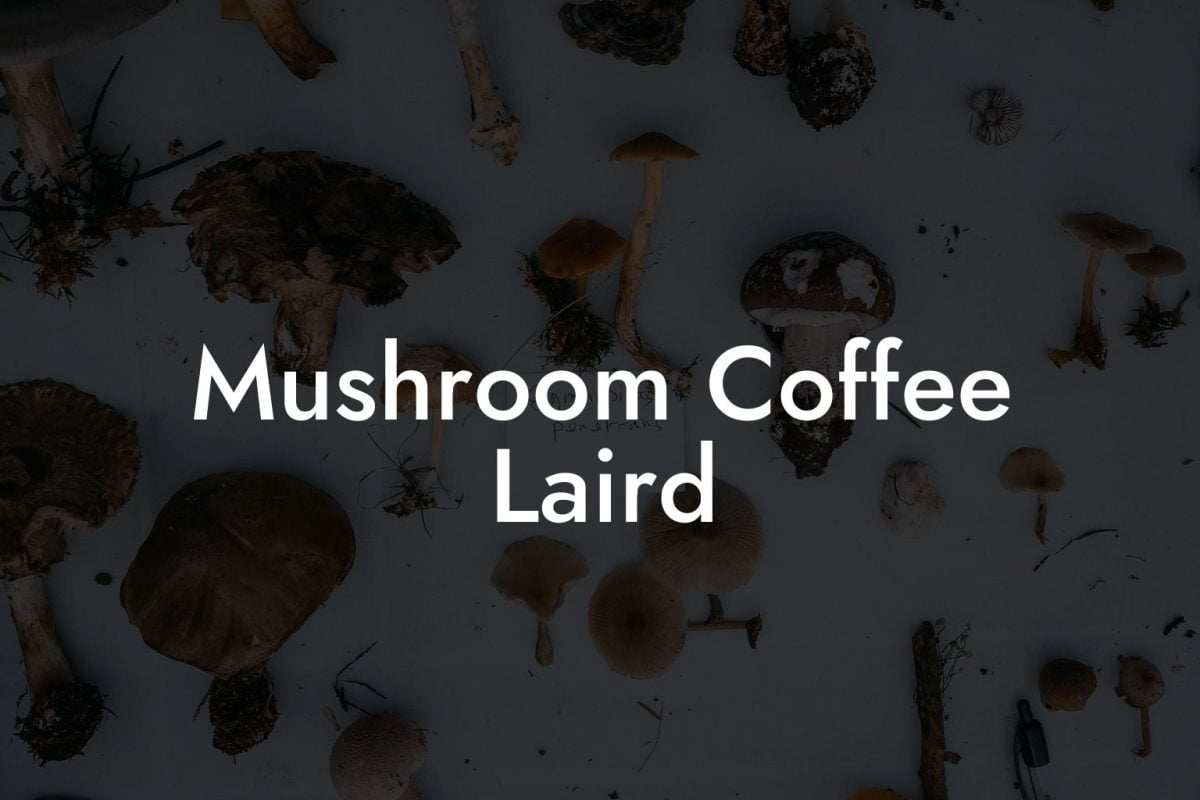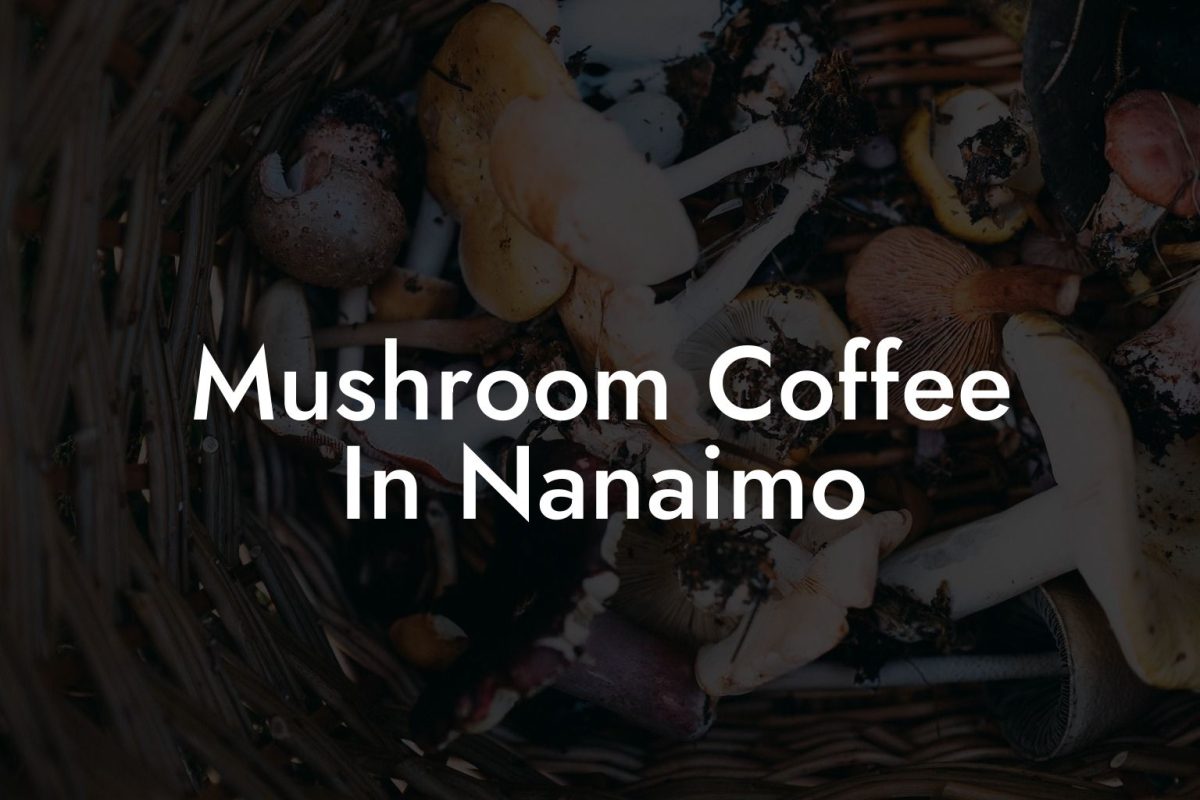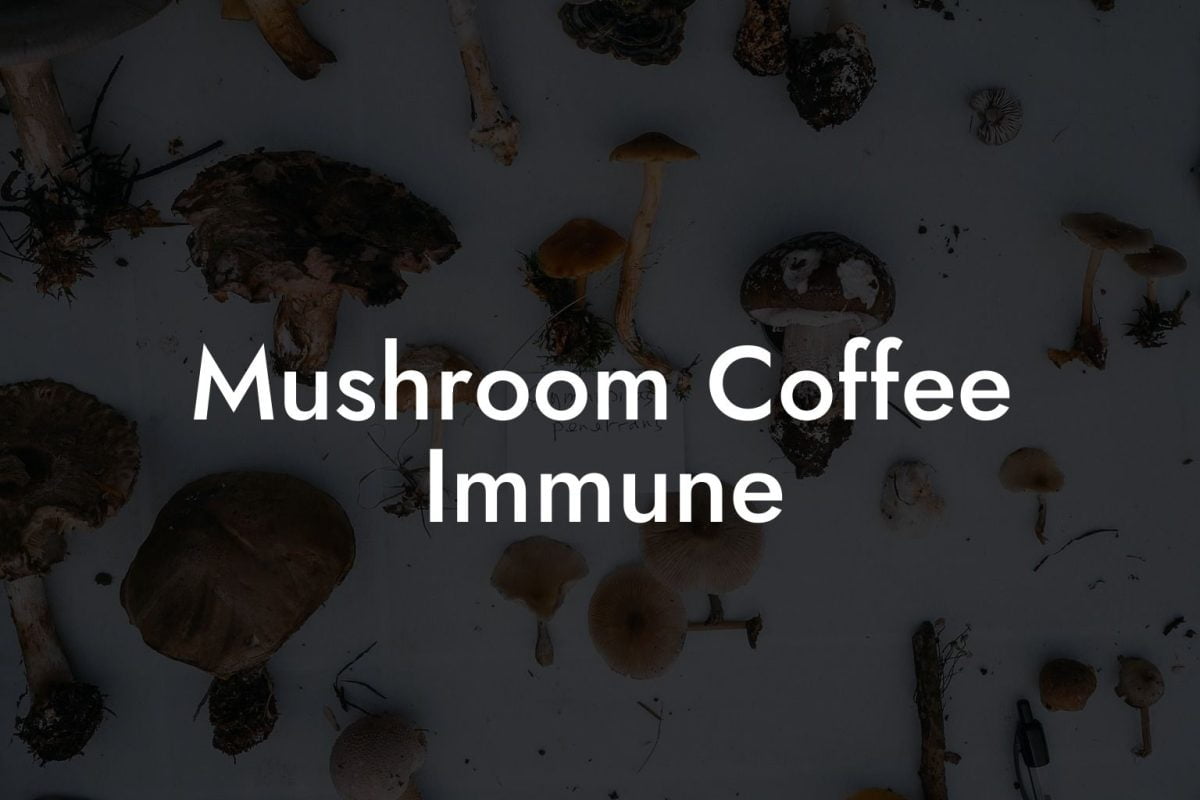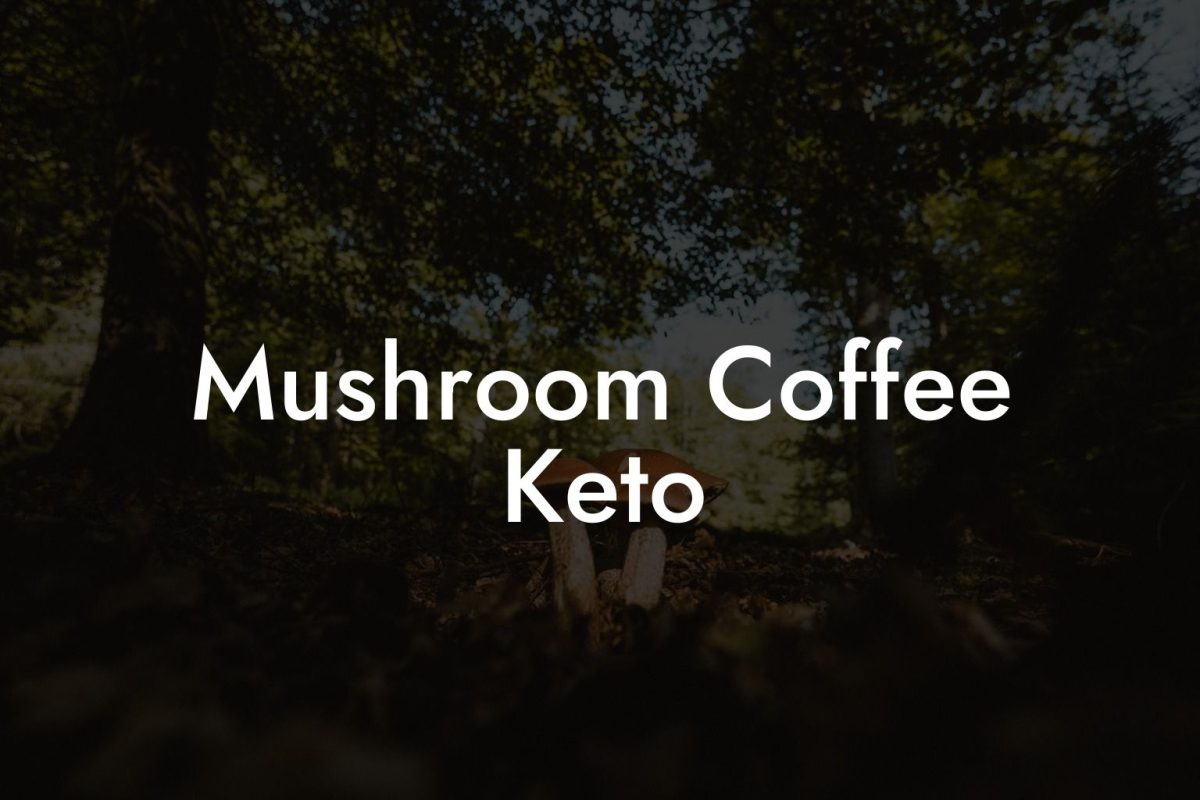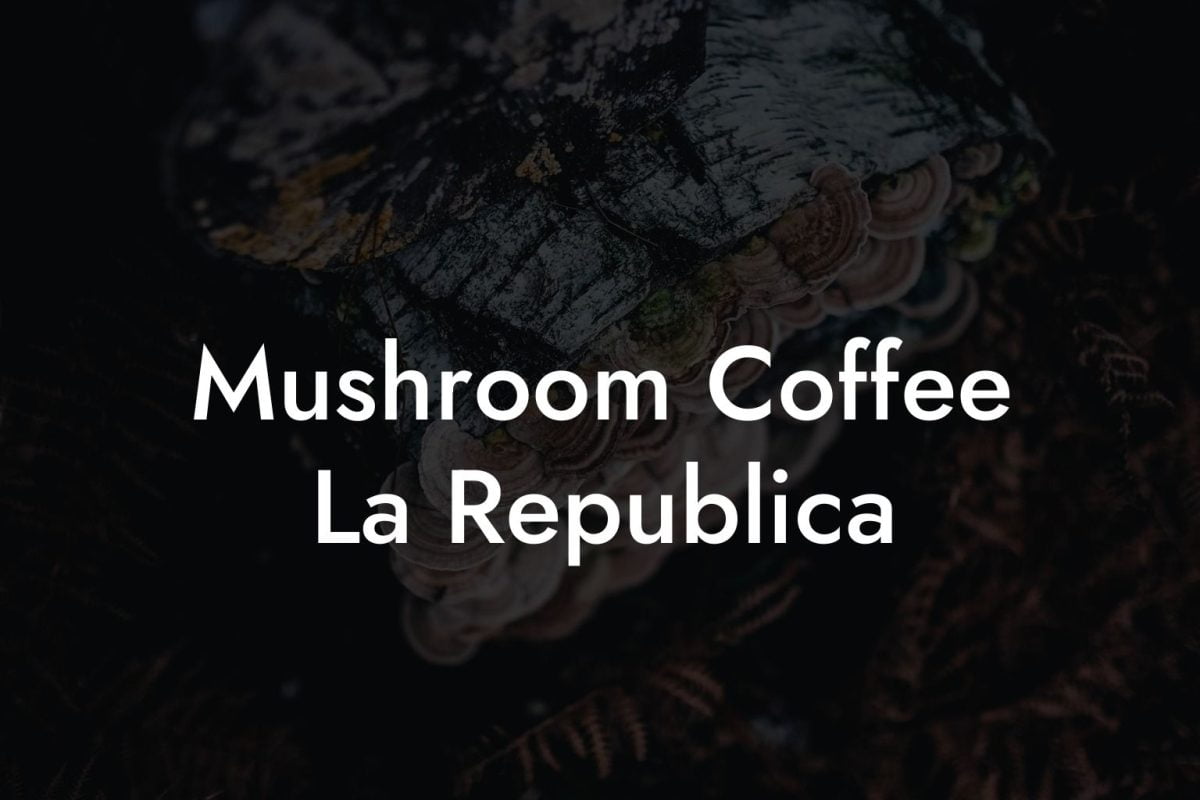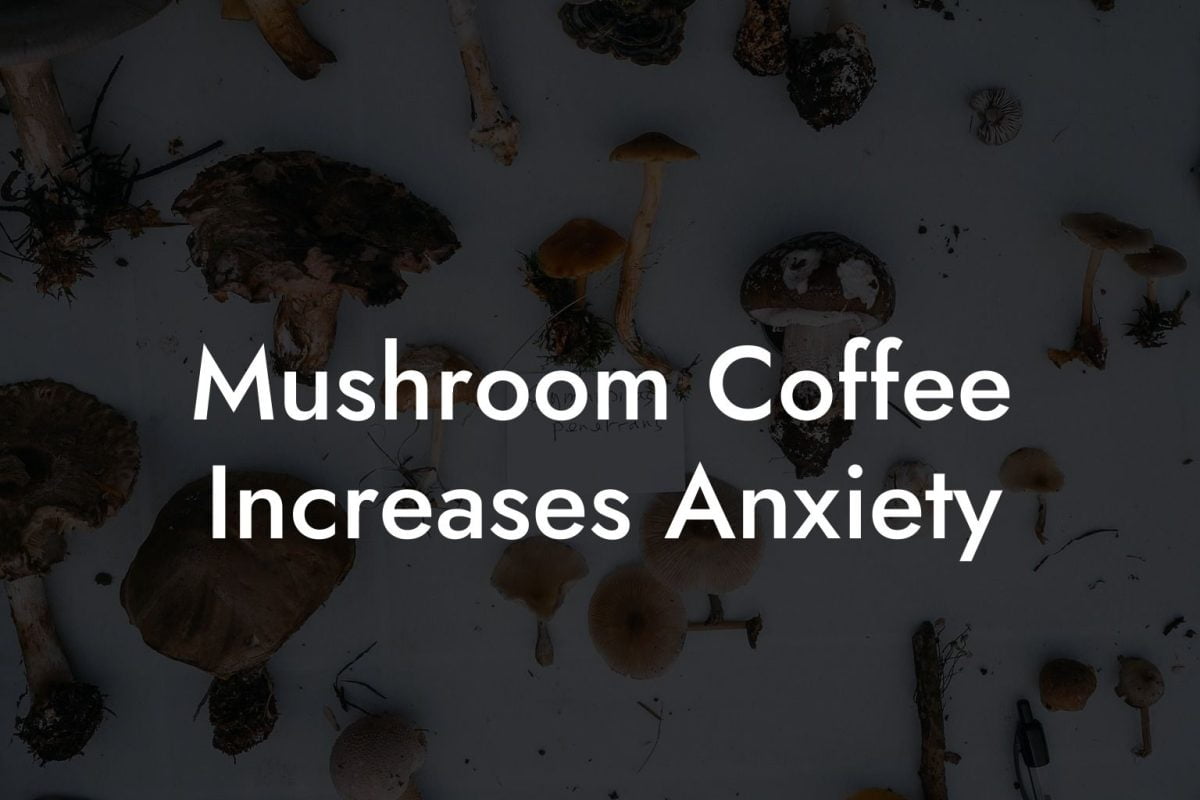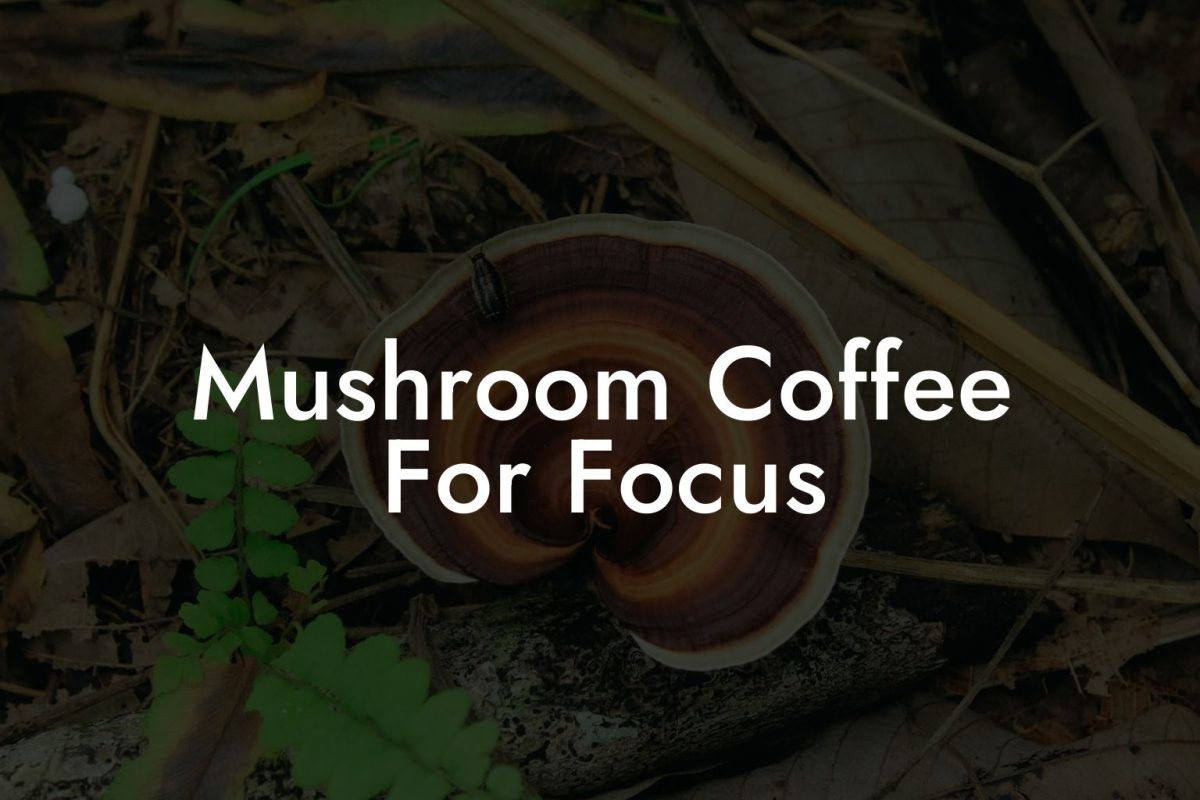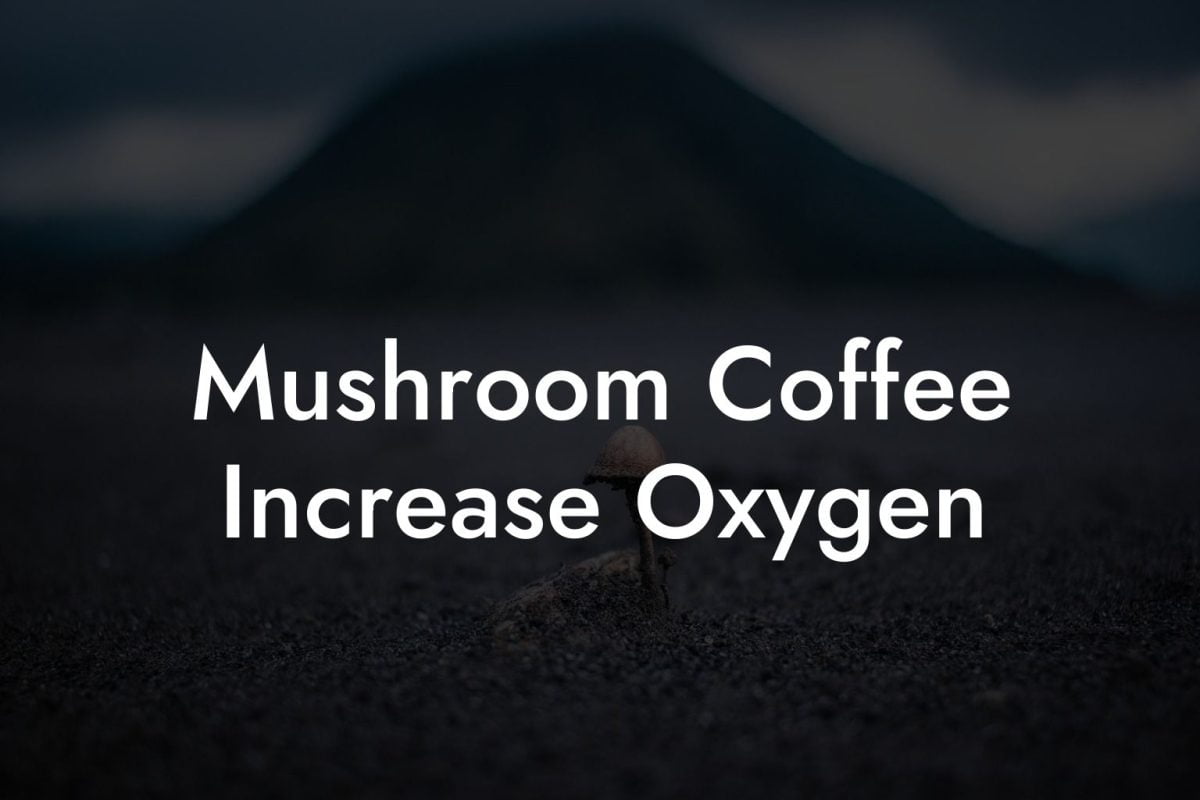Picture this: your morning brew isn’t just giving you that jolt of caffeine, it’s also kick-starting a whole new eco-friendly movement. Welcome to the vibrant world of using coffee grounds as mushroom substrate, where your discarded espresso remnants transform into fertile grounds for gourmet mushrooms. Not only does this ingenious method recycle waste, but it also paves the way for creating your own sustainable, healthy ingredients in the home garden. If you’re a Gen Z or millennial eco-warrior, or even just a coffee aficionado curious about mushroom coffee innovations, you’re in for a treat. Get ready to dive into an adventure that marries sustainability, science, and a hint of magical mycology!
Quick Links to Useful Sections
- The Science Behind Coffee Grounds as Mushroom Substrate
- Why Repurpose Coffee Grounds? Sustainability, Style & Supercharged Substrate
- Brewing Up the Perfect Substrate: Step-by-Step Guide
- Step 1: Gather Your Materials
- Step 2: Prepare the Coffee Grounds
- Step 3: Pasteurize or Sterilize
- Step 4: Inoculation Time
- Step 5: Incubation and Growth
- Step 6: Harvest and Enjoy
- Scientific Insights: Why Coffee Grounds Work Wonders for Mushrooms
- From Waste to Wonder: The Environmental Impact
- Mushroom Coffee: The Trend That Blends Caffeine with Adaptogens
- Maximizing Success: Tips, Tricks, and Troubleshooting
- Choosing the Right Mushroom Species
- Moisture Management
- Temperature Control
- Aeration and Contamination Prevention
- Monitoring and Patience
- Real-Life Stories: Eco-Chic Entrepreneurs and Urban Gardeners
- The Café That Grew Its Own Mushrooms
- DIY at Home: From Kitchen Counter to Gourmet Mushrooms
- The Urban Rooftop Revolution
- Integrating Innovation: From Coffee to Cultures of Coffee and Mushrooms
- Resources and Community Support: Your Next Steps
- Stepping Up and Spreading the Word
- FAQ: Demystifying Coffee Grounds as Mushroom Substrate
- Your Own Eco-Adventures Await
The Science Behind Coffee Grounds as Mushroom Substrate
At the core of this method is a simple yet brilliant idea: repurposing one of our most beloved waste products, used coffee grounds, to nurture the growth of mushrooms. Rich in nitrogen, organic matter, and essential micronutrients, coffee grounds create an ideal environment for certain fungi species. When coffee grounds meet mushroom spores or mycelium, a mutually beneficial relationship is formed. The spent coffee grounds act as a nutrient-dense substrate that fuels fungal growth, while the mycelium breaks down the organic matter, facilitating a natural recycling process.
The substrate isn’t just a passive soil, either. It’s a dynamic medium where microbial communities thrive, aiding in decomposition and nutrient cycling. Science tells us that the physical texture and chemical composition of coffee grounds can enhance moisture retention and aeration, both of which are critical factors for successful mushroom cultivation. This innovative approach is catching on fast, thanks to its environmentally friendly credentials and its potential to transform our daily coffee habit into an act of green stewardship.
In essence, using coffee grounds as a mushroom substrate is a perfect example of a circular economy in action, where waste becomes wealth and creativity meets sustainability. Plus, it offers a hands-on way for urban gardeners and sustainability enthusiasts to experiment with fungi without needing acres of land or heavy equipment.
Why Repurpose Coffee Grounds? Sustainability, Style & Supercharged Substrate
Let’s face it: millions of cups of coffee are brewed every day, and the discarded grounds typically end up in landfills. By redirecting these grounds into mushroom cultivation, you’re not only reducing organic waste but also striking a blow against the linear “take–use–discard” model of consumption. Here’s why this concept is gaining traction:
Looking For The Best Mushroom Coffee? You'll Love These:
- Sustainability in a Cup: Coffee grounds are naturally rich in nitrogen and other vital nutrients, making them a superb organic fertilizer. Using them as a substrate to grow mushrooms is a stellar example of resource efficient living.
- Circular Economy Vibes: Transforming waste into a valuable cultivation medium fits perfectly with the ethos of reusing and recycling. It’s a small but powerful step towards reducing our overall environmental impact.
- Health & Flavor Benefits: Certain mushrooms grown on coffee grounds can boast unique flavor profiles. When these fungi are used for mushroom coffee, they bring along a blend of health-boosting compounds like antioxidants, adaptogens, and vitamins.
- Urban Gardening Game-Changer: For city dwellers with limited space, coffee ground substrates provide an accessible way to cultivate mushrooms at home. It’s DIY, it’s fun, and it’s incredibly satisfying to watch your waste convert into a delicious ingredient.
This approach is not only a testament to innovative thinking but also a call to action for anyone looking to reduce their carbon footprint while enjoying high-quality, organic produce. Whether you’re a homegrown cultivator or simply fascinated by the intersection of food, science, and sustainability, coffee grounds as mushroom substrate is where the buzz is at!
Brewing Up the Perfect Substrate: Step-by-Step Guide
Ready to get your hands dirty? Let’s roll up your sleeves and jump into the absolute basics of transforming your used coffee grounds into an efficient mushroom substrate. This guide will walk you through everything you need to know, from collecting coffee grounds to inoculating your substrate.
Step 1: Gather Your Materials
Before you begin, you’ll need to collect a few essential ingredients:
- Used Coffee Grounds: Fresh, used coffee grounds are your star ingredient. Make sure they’re free from additives like sugar or cream to prevent contamination.
- Water: Hydration is key. Coffee grounds must be moist but not soaking wet.
- Mushroom Spawn: This is the live mycelium that turns your substrate into a fungal feast! Choose a species suited for coffee grounds (oyster mushrooms work beautifully).
- Containers: Plastic bins, buckets, or even recycled coffee cans can serve as your cultivation vessel.
- A Clean Working Area: Ensure everything is sanitized to avoid unwanted mold or bacteria.
Pro tip: If you’re at a local coffee shop that roasts their own beans, see if they’ll save their used grounds for you. Many establishments are eager to support eco-friendly initiatives!
Step 2: Prepare the Coffee Grounds
Once you’ve gathered your grounds, spread them out on a clean surface and let them dry slightly. The goal is to reduce excess moisture while retaining enough dampness to support fungal growth. You can mix in a bit of water if needed, but avoid turning your grounds into a soggy mess.
Step 3: Pasteurize or Sterilize
Contamination is the enemy of mushroom cultivation. For best results, pasteurize or sterilize your coffee grounds by briefly heating them. If pasteurizing, steam the grounds for about 30 minutes; if sterilizing, use a pressure cooker for 60-90 minutes. This process helps reduce unwanted bacterial populations without killing the beneficial microbes that support mushroom growth.
Step 4: Inoculation Time
Now comes the fun part: introducing your mushroom spawn into the prepared coffee grounds. Ensure everything is cool and clean before mixing in the spawn. Use sterile tools and gently blend until every nook and cranny is infested with fungal potential.
Step 5: Incubation and Growth
Transfer the inoculated substrate into your chosen container. Keeping it in a dark, slightly humid place encourages mycelium growth. Over the next few weeks, you’ll see a white network of mycelium weaving through your substrate, a promising sign of fungal growth.
Maintain the right moisture level, and ensure the temperature is consistent (around 20–24°C is optimal for most species). After enough colonization, it’s time to introduce light, triggering the mushrooms to fruit. Patience here pays off, as your mushrooms slowly emerge, ready to harvest and enjoy!
Step 6: Harvest and Enjoy
Harvesting mushrooms at the right time is key to maximizing their flavor and nutritional benefits. When the mushrooms have reached the desired size, typically when the caps have fully unfurled but before they begin to drop spores, it’s time to pick them off gently. Remember, each successful harvest means you’ve completed an eco-friendly cycle of waste repurposing.
Whether you plan to use them fresh in your culinary adventures, dry them for later use, or even experiment with brewing them into mushroom coffee, taking home-grown mushrooms lends an extra layer of satisfaction to your sustainable lifestyle.
Scientific Insights: Why Coffee Grounds Work Wonders for Mushrooms
Let’s break it down in geek-chic style. Coffee grounds are filled with bioavailable compounds that can boost the growth of many fungi species. Their acidic pH, combined with high nitrogen levels and residual organic compounds, provides an ideal environment for the proliferation of mycelium. The rough texture of used coffee grounds also promotes air circulation, which helps prevent the buildup of unwanted anaerobic bacteria.
Furthermore, many studies have shown that the application of coffee grounds as a substrate can stimulate fungal growth by up to 30% compared to more conventional substrates like straw or sawdust. Researchers have uncovered that specific compounds in coffee grounds seem to trigger enzymatic pathways in fungi, essentially acting as a natural fertilizer.
Beyond the lab, real-life applications of this technique have helped urban gardeners maximize yields while minimizing costs. It’s a low-cost, high-reward experiment that bridges the gap between everyday waste and high-value organic cultivation. The result? Mushrooms that not only taste amazing but also carry the story of modern sustainable innovation.
From Waste to Wonder: The Environmental Impact
Every time you discard your coffee grounds, you’re inadvertently contributing to landfill overflow and greenhouse gas emissions. But what if you could flip the narrative? By diverting coffee grounds into mushroom cultivation, you’re engaging in a form of upcycling that reduces waste and promotes a greener future.
Urban sustainability has never been cooler. This process not only helps in waste reduction but also in soil regeneration. The spent substrate, post-harvest, is an excellent compost material that can further enrich your garden soil. Imagine taking your used coffee grounds, growing mushrooms, and then using the residual substrate to nourish a vegetable garden, talk about a full-circle approach!
The ripple effect of such practices is enormous. It encourages more sustainable behavior in our communities, reduces our dependence on chemical fertilizers, and promotes biodiversity in urban environments. Plus, every cup of mushroom coffee made from mushrooms grown on repurposed coffee grounds becomes a badge of honor for the eco-conscious consumer.
Mushroom Coffee: The Trend That Blends Caffeine with Adaptogens
Let’s talk trends, specifically, the phenomenon of mushroom coffee. For those who swear by their latte fix, mushroom coffee offers a twist that’s both intriguing and beneficial. By infusing traditional coffee with functional mushrooms like reishi, lion’s mane, or chaga, which may help boost immunity, reduce stress, and improve cognitive function, the beverage hits two birds with one stone.
But what if we told you that some of these functional mushrooms can be cultivated using something as humble as your old coffee grounds? This unconventional method delivers a double dose of sustainability and functional health. It’s a symbiotic relationship: the coffee nourishes the mushrooms, and in return, the mushrooms enrich your daily brew with adaptogens and antioxidants.
You can now enjoy a beverage that not only wakes you up but also supports your body throughout the day. Mushroom coffee is quickly becoming a favorite among eco-conscious millennials and Gen Z, who value transparency, sustainability, and innovation in their food and beverage choices.
Whether you’re being lured by the promise of increased focus and clarity from lion’s mane or the stress-busting properties of reishi, mushroom coffee is more than just a beverage, it’s a lifestyle statement. It challenges the status quo of traditional coffee consumption and paves the way for a new wave of mindful caffeine consumption.
Maximizing Success: Tips, Tricks, and Troubleshooting
While the idea of cultivating mushrooms on coffee grounds seems straightforward, every DIY project comes with its quirks. Here are some fresh tips to help you maximize your success and troubleshoot common issues:
Choosing the Right Mushroom Species
Not all mushrooms are created equal when it comes to coffee grounds. Oyster mushrooms have proven to be highly adaptable and resilient, making them the best choice for this technique. Other species, like shiitake, might not respond as well because they require different substrate compositions. Do your research and choose a mushroom variety that naturally thrives on nitrogen-rich, organic matter.
Moisture Management
One of the most common pitfalls is over- or under-watering your substrate. Coffee grounds should feel like a well-wrung sponge, moist but not dripping. Use a spray bottle to mist your substrate regularly; this gentle approach reduces the risk of mold while maintaining the conditions needed for mycelium expansion.
Temperature Control
Temperature plays a crucial role in fungal cultivation. Aim for a stable climate (between 20–24°C) and avoid sudden fluctuations. If you’re in a cooler climate, consider using a propagator or a simple heat mat. Remember, the mycelium is like that friend who hates surprises, keep things predictable!
Aeration and Contamination Prevention
Good airflow is essential to prevent bacterial or mold contamination. Keep your containers slightly open or use breathable covers like micropore tape. Always work in a clean environment, sanitize your tools and surfaces to give your mushrooms the best chance at thriving.
Monitoring and Patience
Fungi don’t rush success. Regularly check on your substrate but avoid the temptation to disturb it too often. Patience really is a virtue in mushroom cultivation; trust the process and your efforts will soon pay off in the form of a bountiful harvest.
With these insider tips, you’ll be well-equipped to transform your coffee waste into a thriving mushroom haven. Every challenge along the way is just another opportunity to hone your skills as an eco-savvy cultivator.
Real-Life Stories: Eco-Chic Entrepreneurs and Urban Gardeners
The real magic happens when theory meets practice. Across urban rooftops, community gardens, and indie cafés, forward-thinking individuals are embracing the coffee grounds–to–mushroom revolution. Let’s take a look at a few inspiring stories:
The Café That Grew Its Own Mushrooms
In a bustling city neighborhood, an artisanal café decided to turn its daily deluge of used coffee grounds into a sustainable garden. The owners teamed up with local urban gardeners to create a small mushroom cultivation station in a reclaimed corner of the space. The result? Not only did they reduce waste, but they also offered patrons a unique twist on their menu: a limited-edition mushroom coffee blend with locally grown organic mushrooms. This innovative approach quickly became a social media sensation, attracting eco-conscious foodies and inspiring similar initiatives around the city.
DIY at Home: From Kitchen Counter to Gourmet Mushrooms
Meet Alex, a millennial with an entrepreneurial spirit and a love for sustainable living. Frustrated by both food waste and expensive grocery bills, Alex started experimenting with using his daily coffee grounds to grow oyster mushrooms on his kitchen counter. With a little research, some trial and error, and a dash of creativity, Alex transformed his kitchen waste into a steady supply of gourmet mushrooms. Today, he shares his adventures on social media and even hosts virtual workshops teaching others how to replicate his success. His journey is a testament to how small, innovative changes can lead to big sustainability wins.
The Urban Rooftop Revolution
In a city where space is scarce, a group of community organizers transformed a neglected rooftop into a green oasis. They set up rainwater harvesting systems, compost bins, and, of course, mushroom cultivation stations using locally sourced coffee grounds. The project not only provided fresh produce for local residents but also became a popular community hub. By turning waste into sustenance, these urban pioneers have redefined what it means to live green in a concrete jungle.
These real-life stories highlight how using coffee grounds as mushroom substrate is more than just a quirky experiment, it’s a movement that can bring together communities, foster innovation, and create tangible environmental impact. Their experiences serve as a powerful reminder that sustainable practices can be both fun and profitable.
Integrating Innovation: From Coffee to Cultures of Coffee and Mushrooms
The intertwining of coffee and mushroom cultures is sparking a creative revolution, especially in culinary, health, and fitness circles. As mushroom coffee gains popularity for its health benefits and unique flavor profile, so too does the story of its ingredients. The narrative of repurposing coffee grounds not only charts a success story in sustainability but also mirrors the broader movement towards conscious consumption.
In this blended culture, every sip of mushroom coffee carries with it a deeper narrative, a narrative of innovation, waste reduction, and community empowerment. It's not just about the ritual of coffee drinking; it’s also a daily reminder that nature often provides the best ingredients when we let go of waste and transform what we have. As more eco-conscious startups and home cultivators join the fray, the future of mushroom coffee looks bright, flavorful, and incredibly green.
Resources and Community Support: Your Next Steps
Ready to dive in even deeper? The best part of this movement is that you’re not alone, an entire community of urban growers, eco-entrepreneurs, and mycology enthusiasts is out there to share advice, success stories, and troubleshooting tips. Here are some resources and communities to get you started:
- Online Forums & Social Media Groups: Join popular Facebook groups, Reddit threads, or Discord channels dedicated to mushroom cultivation and sustainable urban gardening. These communities frequently swap tips on harvesting, troubleshooting, and innovative substrate solutions.
- YouTube Tutorials: There’s a treasure trove of step-by-step video guides on using coffee grounds as mushroom substrate. Visual learners can benefit greatly from watching real-life experiments in action.
- Local Workshops and Urban Farming Hubs: Many cities now offer gardening workshops and sustainable living meetups. Participating in these events is a fantastic way to network and learn from seasoned growers.
- Books and Online Courses: For those who want to delve deeper into the mycology behind it all, consider investing in literature or online courses on mushroom biology, sustainable agriculture, and composting techniques.
Whether you’re just starting out or you’re a seasoned cultivator looking for advanced techniques, these resources will help you elevate your game. Engage with the community, share your progress on social media, and remember: every experiment is a step closer to mastering the art of sustainable cultivation.
Stepping Up and Spreading the Word
The journey of transforming coffee grounds into a thriving mushroom substrate isn’t just a personal experiment, it’s a movement that champions sustainability, creativity, and resilience. It’s about challenging the status quo of wastefulness and proving that everyday actions can have a profound environmental impact while still being fun and profitable.
By leveraging this technique, you’re not only indulging your inner eco-warrior but also contributing to broader community efforts aimed at reducing waste and promoting local, organic food production. Each mushroom you grow is a celebration of nature’s incredible ability to transform the mundane into the extraordinary.
And let’s not forget the social media moment: snapping a pic of your homegrown mushrooms alongside your artisanal brew is bound to score you major “green points” with your followers. It’s a relatable, tangible story of how small changes can lead to big impacts, a story that resonates especially well with the Gen Z and millennial audience who value both authenticity and sustainability.
As you embark on this journey, share your experiences widely. Whether it’s through a blog, Instagram live sessions, or community workshops, every bit of knowledge you impart can help someone else take a step toward a more sustainable lifestyle. Remember, innovation often starts with a single bold idea, like turning trash into treasure.
FAQ: Demystifying Coffee Grounds as Mushroom Substrate
Curious about some of the finer details? We’ve gathered a few of the hottest questions we get about using coffee grounds as a mushroom substrate, answered in a straightforward and fun way.
1. Why are coffee grounds an ideal substrate for mushroom growth?
Coffee grounds are rich in nitrogen and organic compounds, providing a nutrient-dense environment for mycelium to thrive. Their texture and moisture retention also help create the perfect habitat for mushroom cultivation.
2. Which type of mushroom is best suited for coffee ground substrates?
Oyster mushrooms are the most popular choice since they’re highly adaptable and thrive on coffee grounds. Other species may work, but many urban growers swear by oysters for their resilience and flavor.
3. Do I need to sterilize the coffee grounds before use?
Yes, sterilizing or pasteurizing the coffee grounds is crucial to remove harmful bacteria or mold spores. This ensures that your mushroom spawn gets a clean slate to flourish.
4. How long does it take for mushrooms to grow on coffee grounds?
Typically, you can expect to see mycelium colonization within a couple of weeks. Fruiting usually begins once the substrate is fully colonized and exposed to the right environmental conditions, which can vary depending on the species.
5. What environmental conditions are ideal for growing mushrooms on coffee grounds?
A stable temperature between 20–24°C, high humidity, proper aeration, and indirect light are all key factors. Consistency is crucial, so a dedicated growing area that can maintain these conditions works best.
6. Can I reuse the substrate after harvesting mushrooms?
Absolutely! Once you’ve harvested your mushrooms, the spent substrate can be further composted and even used to enrich your garden soil. It’s a sustainable cycle from waste to resource.
7. How does using coffee grounds impact the flavor of mushroom coffee?
When mushrooms grown on coffee grounds are used in mushroom coffee, the unique nutrient profile of the substrate can subtly influence the flavor profile, adding earthiness and depth that complements the natural robustness of coffee.
8. Is it expensive to start my own coffee ground mushroom project?
Not at all! Most materials, like used coffee grounds and basic containers, are inexpensive or even free. This DIY project is one of the most cost-effective ways to dip your toe into sustainable mushroom cultivation.
With these answers, you can start your own mushroom cultivation journey well-equipped with knowledge and confidence. Remember, every question is an opportunity to innovate and reduce waste!
Your Own Eco-Adventures Await
The idea of turning everyday coffee waste into a gateway for mushroom cultivation isn’t just an experiment, it’s a lifestyle upgrade. Every time you repurpose those coffee grounds, you contribute to a more sustainable world while indulging in a creative, hands-on project that can yield both delicious food and unexpected benefits.
From a practical standpoint, using coffee grounds as a substrate for mushrooms is a win-win: you get to reduce waste, save money, and maybe even discover a new passion or business. It’s a reminder that everyday materials hold endless potential when viewed with an innovative, eco-conscious mindset.
Whether you’re setting up a mini mushroom farm in your apartment or partnering with local businesses to promote sustainable practices, every small action counts. Embrace this journey and let your creative energy flow, from the kitchen counters to community gardens, and even into the trendsetting realm of mushroom coffee.
So, what are you waiting for? Grab those used coffee grounds, get your inoculation tools ready, and join the burgeoning movement that’s redefining waste, one mushroom at a time. Your green revolution is brewing, and it’s as refreshingly bold as your favorite cup of joe.
Looking For The Best Mushroom Coffee? You'll Love These:
Useful Interruption: Dive deeper into the world of Mushroom Coffee with our most popular sections. If there is anything you think is missing or anything you would love for us to write about, just give us a shout.
- Mushroom Coffee Equipment & Product Reviews
- Mushroom Coffee Recipes & Creative Variations
- Mushroom Coffee Guides & Troubleshooting
- Mushroom Coffee Brewing & Preparation Techniques
- Model Rocket Advanced Rocketry & Innovations
- Mushroom Coffee Fundamentals
- Model Rocket Equipment Reviews & Digital Tools
- Mushroom Coffee Health Benefits & Wellness
- Mushroom Coffee Mycology & Scientific Insights
- Mushroom Coffee Community, Lifestyle & Engagement
I tried mushroom coffee this morning and told my friend, "This brew is spore-tacular!" He shot back, "Guess that's why it's such a cap-tivating way to kickstart your day!"


